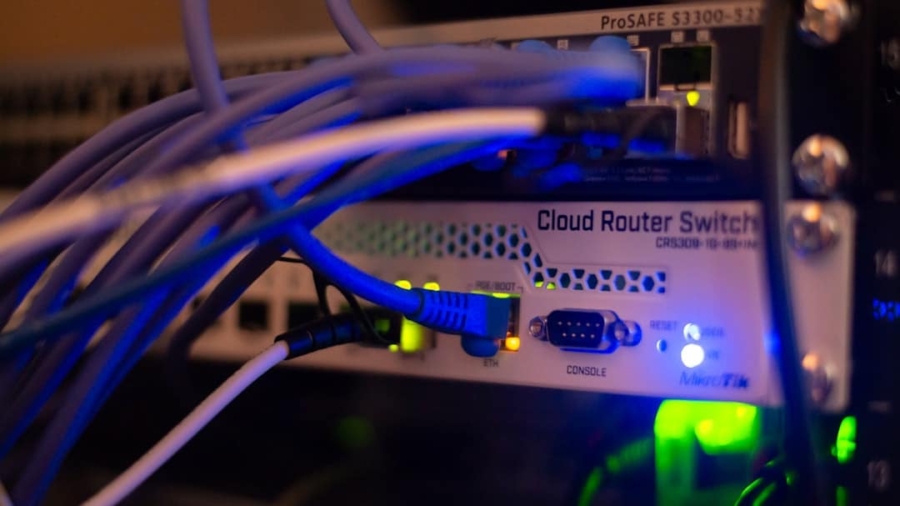In an increasingly interconnected world, the importance of cybersecurity cannot be overstated. Organizations across various sectors are under constant threat from cybercriminals who exploit vulnerabilities in digital infrastructures. Real-time cybersecurity threat detection has emerged as a critical component in the defense against these threats, enabling organizations to identify and respond to potential breaches as they occur.
This proactive approach is essential for minimizing damage and protecting sensitive data, as the speed at which cyberattacks can unfold often outpaces traditional security measures. Real-time threat detection involves the continuous monitoring of networks, systems, and applications to identify suspicious activities or anomalies that may indicate a security breach. This process relies on advanced technologies and methodologies to analyze vast amounts of data in real time, allowing security teams to respond swiftly to potential threats.
As cyber threats become more sophisticated, the need for effective real-time detection mechanisms has never been more pressing. Organizations are increasingly turning to innovative solutions, including artificial intelligence (AI) and machine learning (ML), to enhance their cybersecurity posture and ensure robust protection against evolving threats.
Key Takeaways
- Real-time cybersecurity threat detection is crucial for identifying and mitigating cyber attacks as they happen, rather than after the fact.
- Artificial intelligence plays a key role in cybersecurity by enabling automated, real-time threat detection and response.
- Machine learning and AI algorithms are used to analyze large volumes of data and identify patterns indicative of potential cyber threats.
- Using AI for real-time cybersecurity threat detection offers advantages such as faster response times, improved accuracy, and the ability to handle large amounts of data.
- However, challenges and limitations of AI in real-time cybersecurity threat detection include the potential for false positives, the need for ongoing training and updates, and the risk of adversarial attacks.
The Role of Artificial Intelligence in Cybersecurity
Enhanced Detection Capabilities
AI systems can process vast amounts of information at speeds unattainable by human analysts, enabling them to detect patterns and anomalies that may indicate malicious activity. This capability is crucial in a landscape where cyber threats are becoming increasingly complex and varied.
Predictive Analytics
Moreover, AI enhances the ability to predict and prevent cyberattacks by analyzing historical data and identifying trends that may signal future vulnerabilities. For instance, AI algorithms can learn from past incidents to develop predictive models that help organizations anticipate potential threats before they materialize.
Proactive Defense
This proactive approach not only strengthens an organization’s defenses but also allows security teams to allocate resources more effectively, focusing on high-risk areas that require immediate attention. As a result, AI is not just a tool for detection; it is a strategic asset that empowers organizations to stay one step ahead of cybercriminals.
Machine Learning and AI Algorithms for Real-Time Threat Detection
Machine learning, a subset of artificial intelligence, is particularly well-suited for real-time threat detection due to its ability to learn from data and improve over time. Various algorithms are employed in this domain, each with its unique strengths and applications. For example, supervised learning algorithms can be trained on labeled datasets containing examples of both benign and malicious activities.
By learning the characteristics of these examples, the algorithm can classify new data points in real time, effectively distinguishing between normal behavior and potential threats. Unsupervised learning algorithms also play a vital role in threat detection by identifying anomalies without prior labeling. These algorithms analyze network traffic or user behavior patterns to establish a baseline of normal activity.
When deviations from this baseline occur—such as unusual login attempts or unexpected data transfers—the system can flag these anomalies for further investigation. Additionally, reinforcement learning techniques can be utilized to optimize response strategies based on feedback from previous actions taken during security incidents. This dynamic learning process allows organizations to adapt their defenses continuously as new threats emerge.
Advantages of Using AI for Real-Time Cybersecurity Threat Detection
The integration of AI into real-time cybersecurity threat detection offers numerous advantages that significantly enhance an organization’s security posture. One of the most notable benefits is the speed at which AI systems can analyze data and identify threats. Traditional methods often involve manual processes that can be time-consuming and prone to human error.
In contrast, AI-driven solutions can process vast datasets in seconds, allowing for immediate identification of potential breaches and enabling rapid response measures. Another significant advantage is the scalability of AI solutions. As organizations grow and their digital environments become more complex, the volume of data generated increases exponentially.
AI systems can easily scale to accommodate this growth, continuously monitoring networks and systems without a corresponding increase in human resources. This scalability ensures that organizations can maintain robust security measures even as their operations expand.
Challenges and Limitations of AI in Real-Time Cybersecurity Threat Detection
Despite its many advantages, the use of AI in real-time cybersecurity threat detection is not without challenges and limitations. One significant concern is the potential for false positives—instances where benign activities are incorrectly flagged as threats. High rates of false positives can lead to alert fatigue among security teams, causing them to overlook genuine threats amidst a barrage of notifications.
Striking the right balance between sensitivity and specificity in AI algorithms is crucial to minimizing this issue. Additionally, the effectiveness of AI systems is heavily dependent on the quality and quantity of data used for training. Inadequate or biased datasets can lead to skewed results and ineffective threat detection capabilities.
Organizations must ensure that their training data is representative of the diverse range of activities occurring within their networks. Moreover, as cybercriminals become more adept at evading detection techniques, there is an ongoing arms race between attackers and defenders. AI systems must continuously evolve to keep pace with emerging threats, necessitating ongoing investment in research and development.
Case Studies: Successful Implementation of AI in Real-Time Cybersecurity Threat Detection
Several organizations have successfully implemented AI-driven solutions for real-time cybersecurity threat detection, showcasing the technology’s effectiveness in combating cyber threats. One notable example is Darktrace, a cybersecurity firm that utilizes machine learning algorithms to detect anomalies within network traffic. Darktrace’s Enterprise Immune System mimics the human immune system by establishing a baseline of normal behavior for each device within a network.
When deviations occur, such as unusual data transfers or unauthorized access attempts, the system alerts security teams in real time, enabling swift action. Another compelling case study involves IBM’s Watson for Cyber Security, which leverages natural language processing and machine learning to analyze vast amounts of unstructured data from various sources, including security blogs, research papers, and threat intelligence feeds. By synthesizing this information, Watson can identify emerging threats and provide actionable insights to security analysts.
Organizations using Watson have reported improved incident response times and enhanced situational awareness, demonstrating the tangible benefits of integrating AI into their cybersecurity strategies.
Future Trends and Developments in AI for Real-Time Cybersecurity Threat Detection
The future of AI in real-time cybersecurity threat detection is poised for significant advancements as technology continues to evolve. One emerging trend is the increased use of explainable AI (XAI), which aims to make AI decision-making processes more transparent and understandable to human analysts. As organizations seek to build trust in AI systems, XAI will play a crucial role in ensuring that security teams can comprehend how decisions are made and why certain actions are recommended.
Additionally, the integration of AI with other emerging technologies such as blockchain could enhance cybersecurity measures further. Blockchain’s decentralized nature offers a secure method for storing and sharing threat intelligence data among organizations while maintaining data integrity. By combining these technologies, organizations can create more resilient cybersecurity frameworks capable of adapting to new challenges.
Furthermore, as remote work becomes more prevalent, there will be an increased focus on securing distributed networks and endpoints. AI-driven solutions will need to evolve to address the unique challenges posed by remote work environments, such as securing personal devices and ensuring safe access to corporate resources from various locations.
The Impact of AI on Real-Time Cybersecurity Threat Detection
The impact of artificial intelligence on real-time cybersecurity threat detection is profound and far-reaching. By automating data analysis and enhancing predictive capabilities, AI empowers organizations to respond swiftly to emerging threats while optimizing resource allocation within security teams. As cybercriminals continue to develop increasingly sophisticated tactics, the role of AI will only become more critical in safeguarding sensitive information and maintaining operational integrity.
While challenges remain in terms of false positives and data quality, ongoing advancements in machine learning algorithms and explainable AI will help address these issues over time. The successful implementation of AI-driven solutions across various industries serves as a testament to their effectiveness in enhancing cybersecurity measures. As we look toward the future, it is clear that AI will play an indispensable role in shaping the landscape of real-time cybersecurity threat detection, enabling organizations to navigate an ever-evolving threat environment with confidence.




